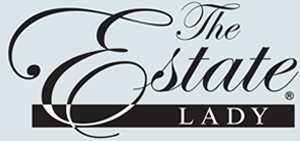When it comes to the worth of heirlooms and antiques, one characteristic of value needs to be understood and it’s not how old the item is. It’s condition. Original condition!
We all know what the word original means: initial, first, earliest, the real thing. It means the appearance of an item has been left intact, the way the artist or creator intended it to be in its original state. No stripping, refinishing, repairing, painting, gluing, drilling holes, polishing, lacquering, etc.
Original to a collector wanting to buy a fine item means they prefer it this way. The mellowing of leather or wood that only the passage of time can accomplish to near perfection, which also demonstrates the piece is true to the period, blemishes included. These blemishes are part of the item’s history. If it could talk, the stories it could tell!
Many seem to be of the mindset that if mother’s tables are antique, they are definitely valuable. This is simply NOT the case; please pass the word along! Age is only one characteristic of value. While it certainly can be a contributing factor of value, many other factors are also evaluated when a professional assigns value. Condition is right up there at the top of the list.
I’m called to an estate to see mom’s antiques, but they are in poor or fair condition. They could be covered in years of nicotine, mold/mildew, or have been continually exposed to humidity or cold. Maybe someone painted the primitive table sage green, or cut down the legs of the dining table to make a nice coffee table. All the owner understands is that these items are old and should put considerable cash in their pocket.
An appraiser sees these items are not in good condition, or the original condition has been altered permanently. Getting it back to a “sellable” condition will take a small miracle, not to mention more money than the piece may actually be worth. These pieces can still be sold and a fixer-upper may want them, but at a fraction of the price people have in their minds. The owner of the pieces gets upset because the pieces are not selling for what they perceived they would sell for. I know … it’s a lot to take in!
If you are downsizing or selling the contents of an estate, look at the items from the perspective of an appraiser or personal property expert. Consider all the flaws and permanent alterations to pieces before setting expectations too high. Otherwise, you might be quite disappointed.
©2015 The Estate Lady®
Julie Hall, The Estate Lady®, is the foremost national expert on personal property in estates, including liquidating, advising, and appraising. http://www.TheEstateLady.com She is also the Director of American Society of Estate Liquidators®, the national educational and resource organization for estate liquidation. http://www.aselonline.com.
No part of The Estate Lady® blogs, whole or partial, may be used without Julie Hall’s written consent. Email her at Julie@TheEstateLady.com.


